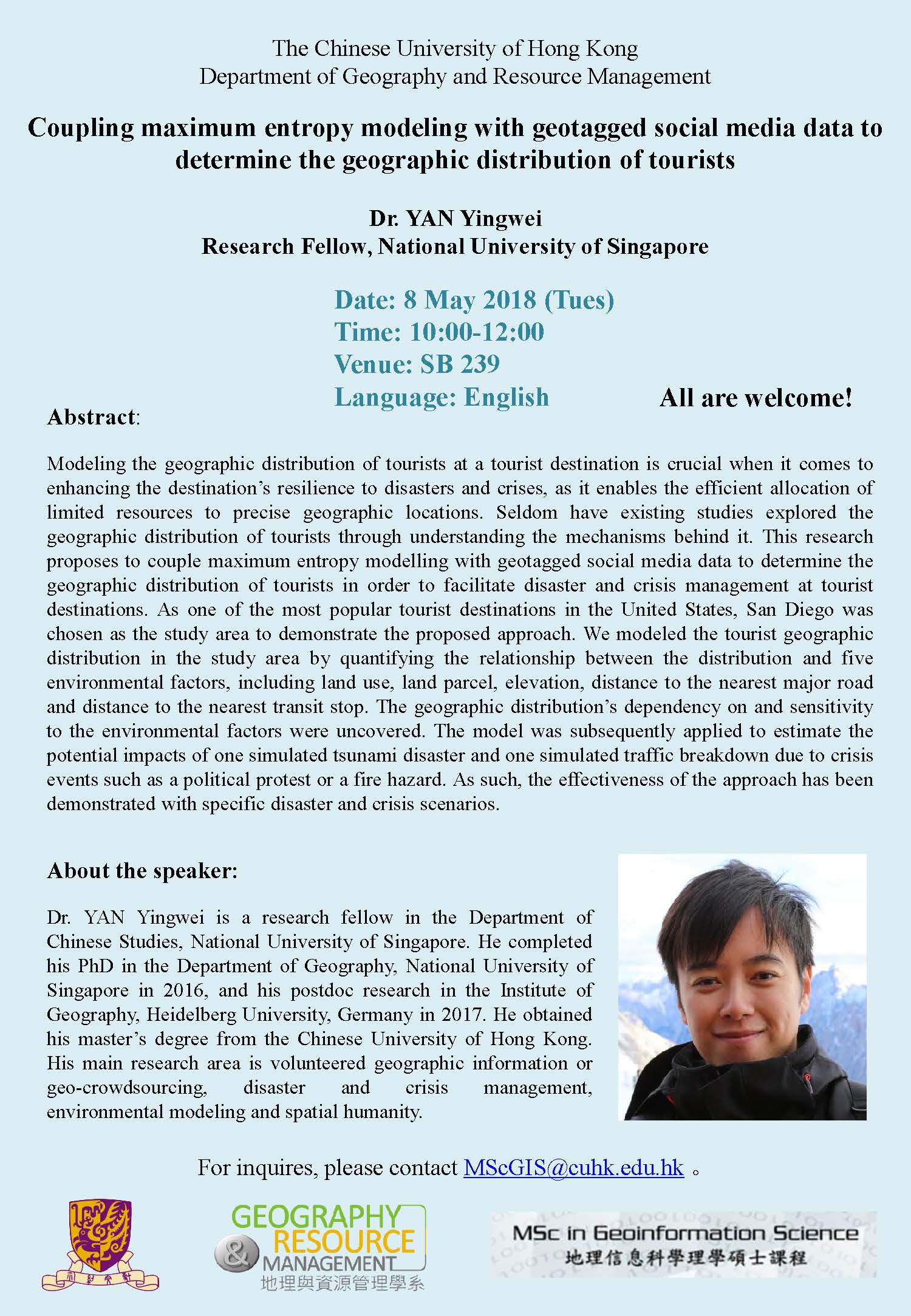Coupling maximum entropy modeling with geotagged social media data to determine the geographic distribution of tourists

by Dr. YAN Yingwei Research Fellow, National University of Singapore
Abstract:
Modeling the geographic distribution of tourists at a tourist destination is crucial when it comes to enhancing the destination’s resilience to disasters and crises, as it enables the efficient allocation of limited resources to precise geographic locations. Seldom have existing studies explored the geographic distribution of tourists through understanding the mechanisms behind it. This research proposes to couple maximum entropy modelling with geotagged social media data to determine the geographic distribution of tourists in order to facilitate disaster and crisis management at tourist destinations. As one of the most popular tourist destinations in the United States, San Diego was chosen as the study area to demonstrate the proposed approach. We modeled the tourist geographic distribution in the study area by quantifying the relationship between the distribution and five environmental factors, including land use, land parcel, elevation, distance to the nearest major road and distance to the nearest transit stop. The geographic distribution’s dependency on and sensitivity to the environmental factors were uncovered. The model was subsequently applied to estimate the potential impacts of one simulated tsunami disaster and one simulated traffic breakdown due to crisis events such as a political protest or a fire hazard. As such, the effectiveness of the approach has been demonstrated with specific disaster and crisis scenarios.
Date: 8 May 2018 (Tues)
Time: 10:00-12:00
Venue: SB 239
Language: English



